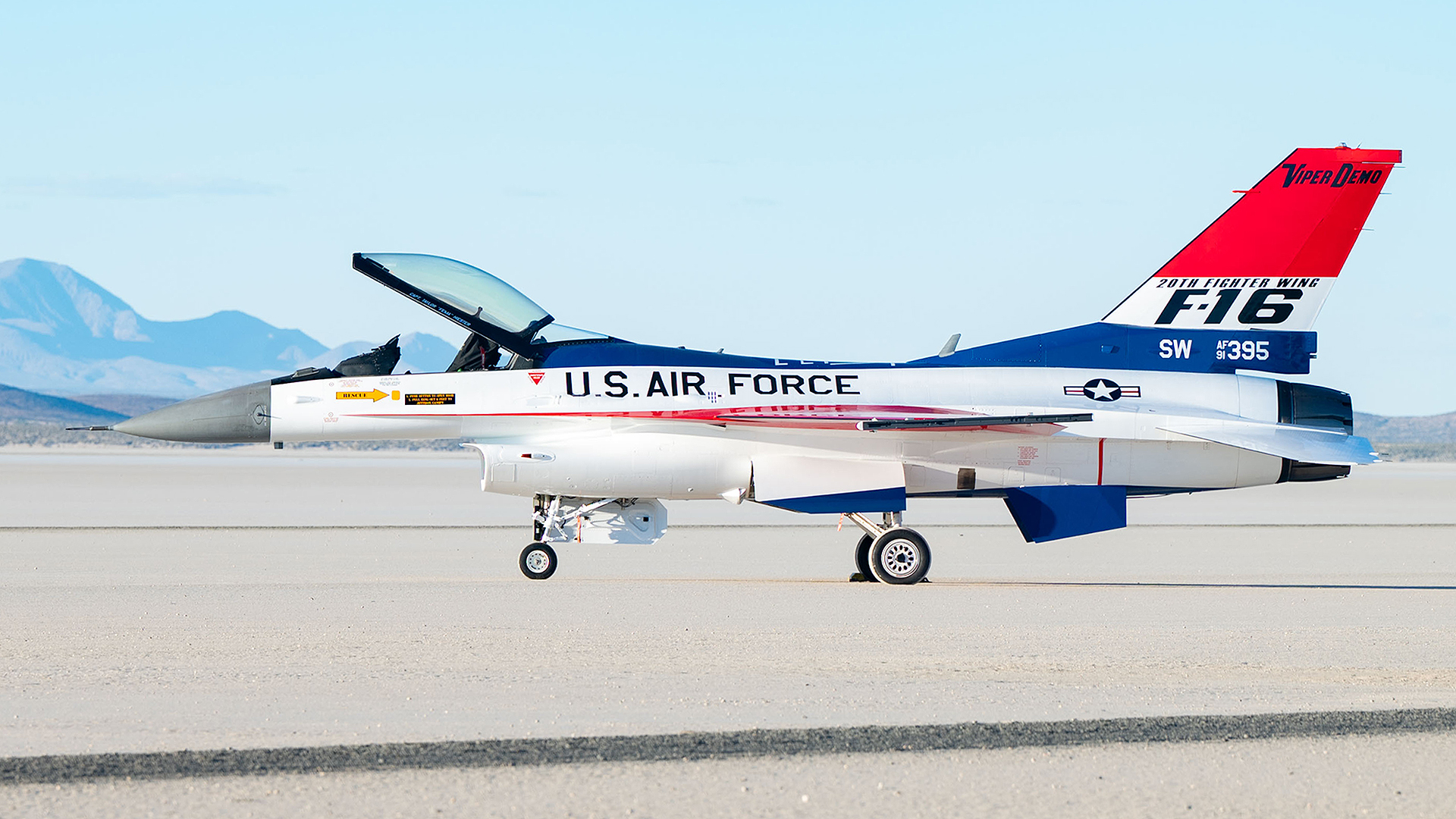This is a huge year for the F-16. The most successful 4th generation fighter of all time with nearly 5,000 jets produced just marked 50 years since its first flight. With orders for new Fighting Falcons, or Vipers as they are now popularly known, stacking up and second-hand models in high demand, the F-16’s future remains amazingly bright.
To commemorate the F-16’s half-century anniversary and the type’s monumental success, the United States Air Force’s Viper Demonstration Team just pulled off a grand surprise, painting their lead jet in the same iconic red, white, and blue color scheme as the aircraft that started it all, the YF-16.
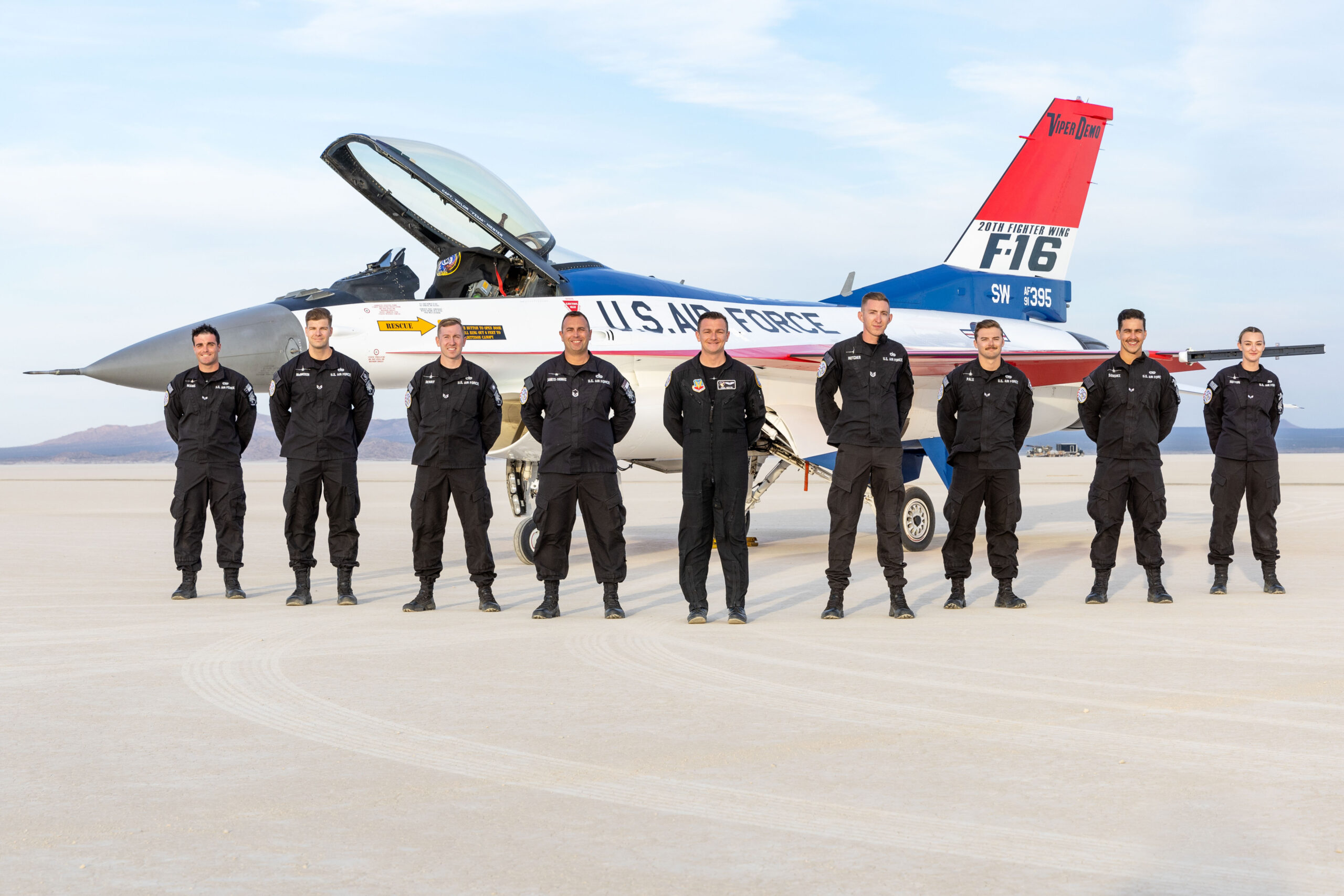
We talked with the team’s commander, Captain Taylor “FEMA” Hiester, about how his unit pulled this special paint scheme off and what this anniversary means for him and his crew.
Here is that exchange in written question-and-answer form:
Being the face of the USAF’s entire F-16 community, and even really beyond that, what does the 50th anniversary of the jet mean to the demonstration team? How is this year different from any in the past for the unit?
Our team is a small group of active-duty Airmen that have the honor of representing the entire force on the world stage. My mission for the team is to show America what it looks like when a small group of people give everything that they have to something bigger than themselves.
On May 13th, I was holding short of the runway at Edwards AFB prior to taking off for the first time in the new paint scheme and it was a surreal moment. It was a planned aerial photo chase mission over the dry lakebed. I looked out and saw the team standing next to the runway when the tower cleared me for takeoff and I’m not shy in saying that it was emotional.
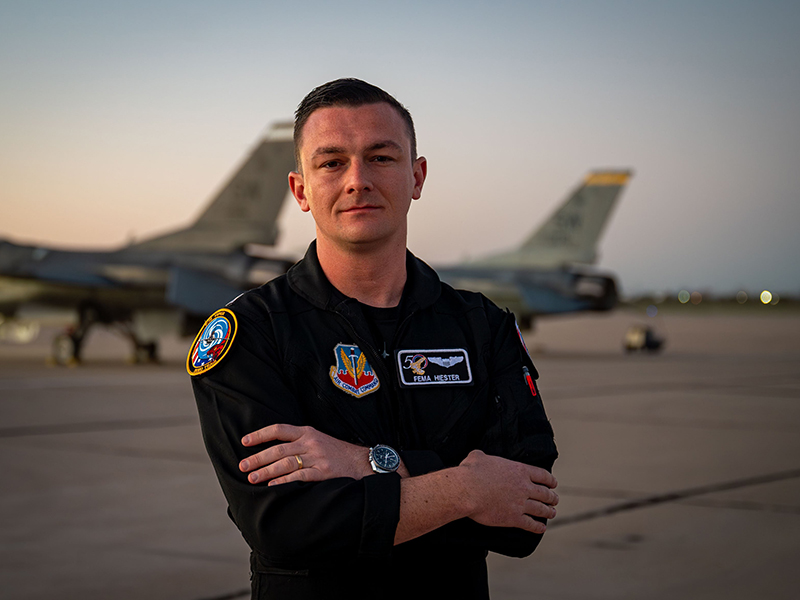
Before I pushed the power up, I called the team on our UHF radio and dedicated the flight to all of the Americans that have served in this amazing airplane’s orbit for the last 50 years – engineers, pilots, maintainers, and specialists of all kinds. For the very first time ever, I took off with the callsign “FALCON 50” rather than “VIPER 01,” which is the standard for the team.
I’ve always had an emotional connection to the F-16 and more broadly, America’s air dominance, which has undoubtedly been cast time and time again at Edwards AFB, the center of the flight test universe. To be part of that history for such a brief but shining moment is something that I will never forget, but I don’t feel that the moment belongs to me or any member of the team. It belongs to the people. We the people.
How did you guys actually pull this off? Nobody has heard anything about this being in the works, at least that I am aware of. Let’s hear a bit about your ‘clandestine operation’ to give the display Viper a heritage paint job like this.
When I was hired to be the commander and pilot in the summer of last year, I had made it known that I hoped to find a way to get our airplane painted in the prototype scheme as to take America back to the beginning of the story that started 50 years ago. After literally dozens of “nos” we were able to get to “yes.”
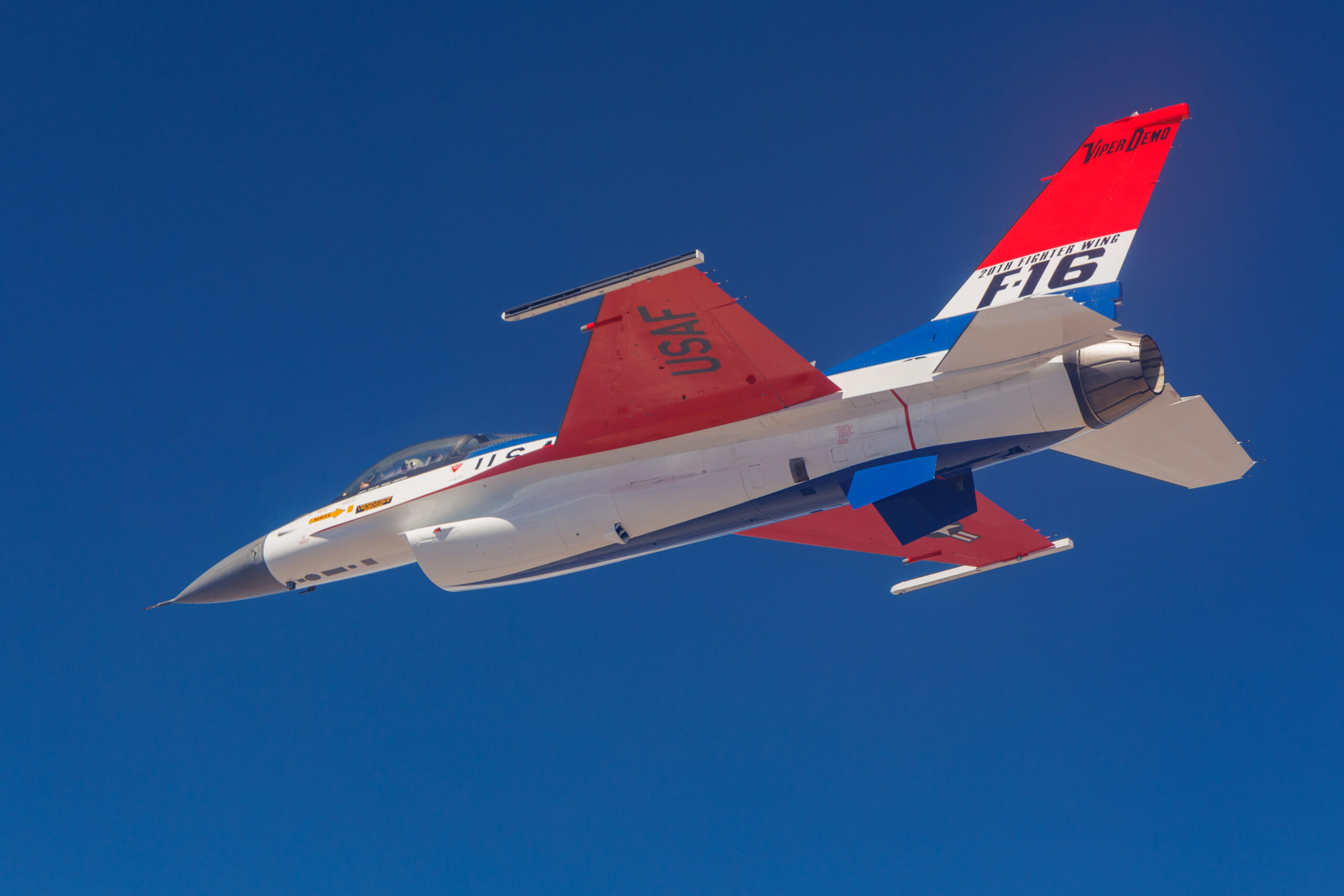
The only way that we were able to get started was with the support of the leadership at the 20th Fighter Wing, the home of the F-16 Demonstration Team, who believed in the importance of this project and supported the vision that we had in mind. The rest of the story is the really special part. I decided that we would keep it a secret, which caused a lot of angst because literally thousands of people approached us in person or via social media in disbelief that the American Viper Demonstration Team wouldn’t have a paint scheme for the airplane’s 50th anniversary. I didn’t want it to be a secret to shock the airshow industry or increase interest in our team. I wanted it to be a secret to show Americans that our Air Force is achieving dreams even when you can’t see us. Even when we’re in the shadows.
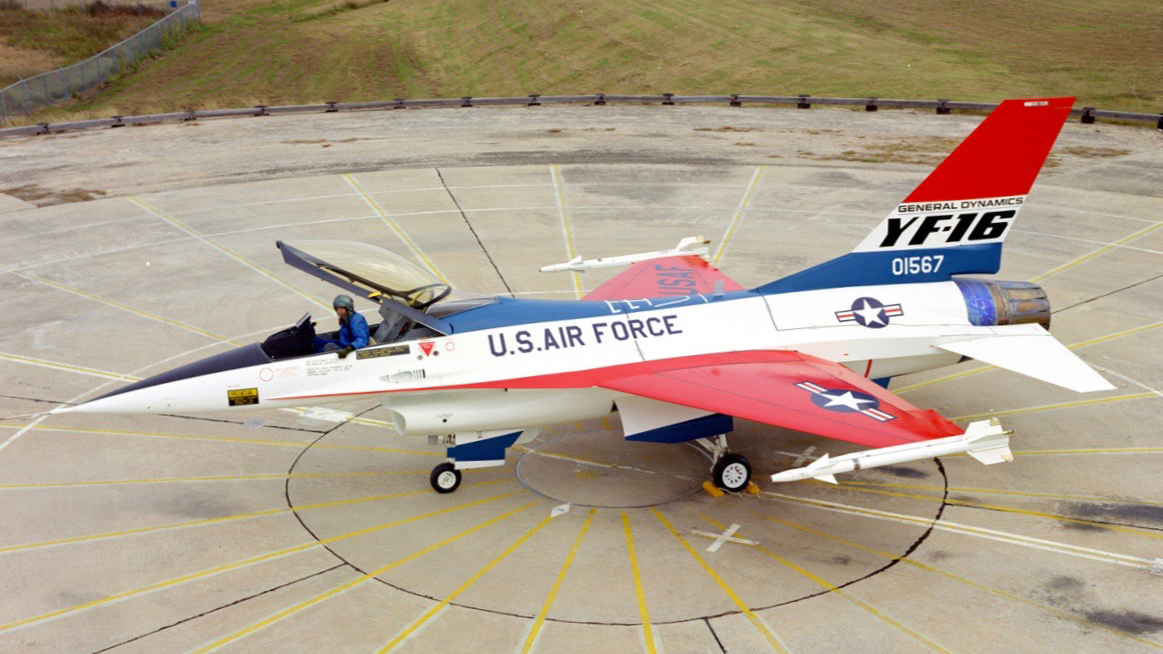
The next step was trying to find a place to paint the airplane, which is more involved than people might think. My first call was to Mr. Tony Accurso, a career Air Force veteran and civilian employee at Edwards AFB, whose passion for our aviation history goes unmatched. He served as the director for the Edwards AFB F-16 50th Anniversary event in January 2024. He is as humble a man that you could find if you looked for 30 years, which I have. Within 24 hours of the first phone call, Tony had mobilized all of the people at Edwards AFB, including but not limited to, the corrosion shop that would actually paint the airplane as well as program managers and maintenance support. The 412th Corrosion Shop at Edwards AFB agreed to paint the airplane.
The clock was ticking and the airshow season loomed. I recall a moving phone call with the paint shop lead when he said they’d do whatever they could to deliver the airplane in half of the normal time with absolutely no compromise on their world-famous standard. I assembled a final presentation complete with a price tag that I’d brief to the Wing Commander for his approval of the project. I walked in the room and felt the weight of 50 years of people that have worked with this airplane because I knew I’d either leave with a plan to honor all of them with a paint scheme that they deserved or something more realistic and less expensive, which, in my opinion, would be understandable for another country, but not this one. I left his office reminded once again that there is no place like home. This is the greatest country in the world and I knew that when America eventually saw the airplane, we’d be one step closer to getting back to saying that out loud again.
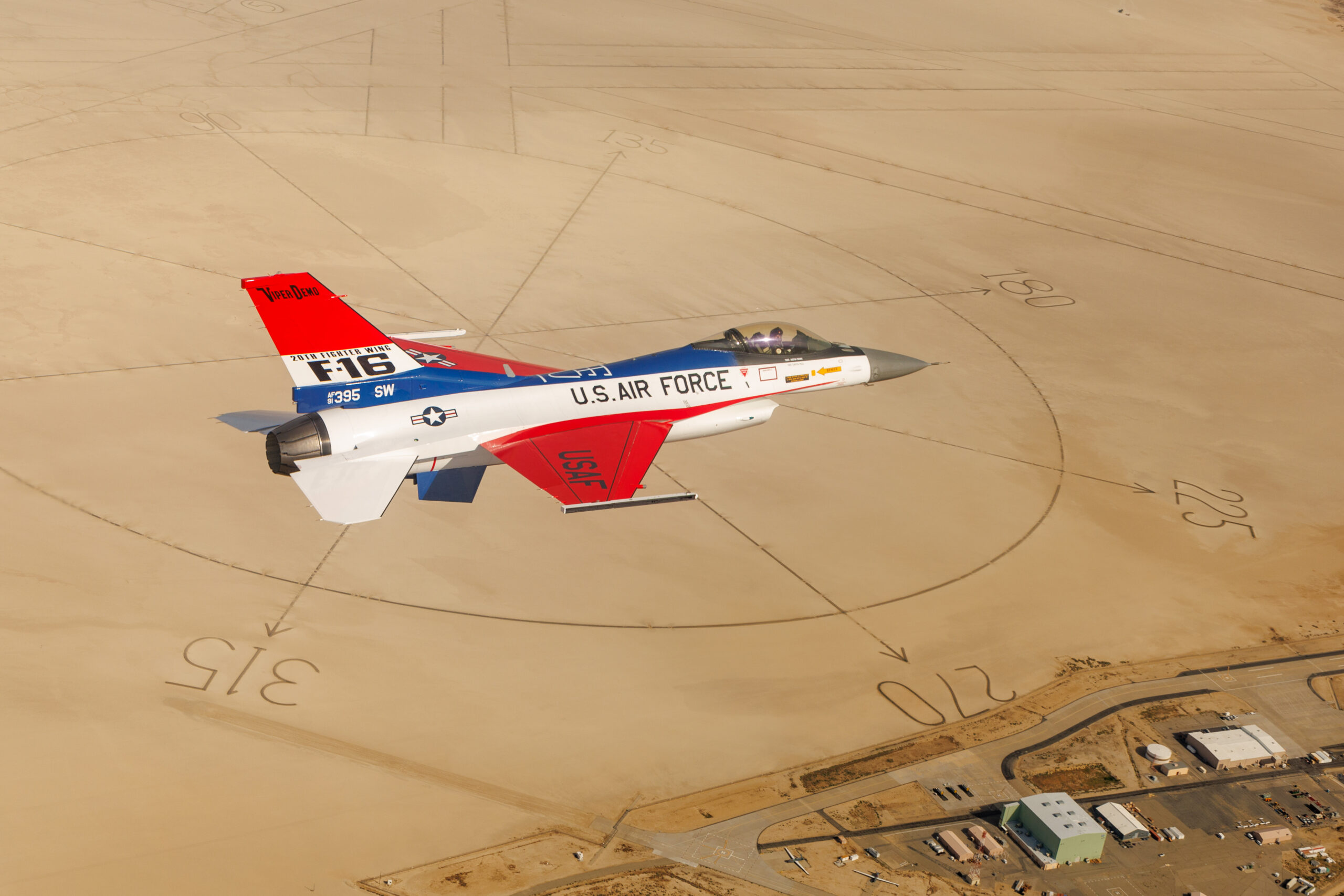
I delivered the airplane in secret to Edwards AFB following the New Orleans Airshow. I even went the distance of flying with a different callsign than normal so that there couldn’t be questions from the enthusiasts about why VIPER 01 was en route to Edwards early in the show season.
How was the scheme selected? It’s an obvious option, but were others considered?
No other options were considered.
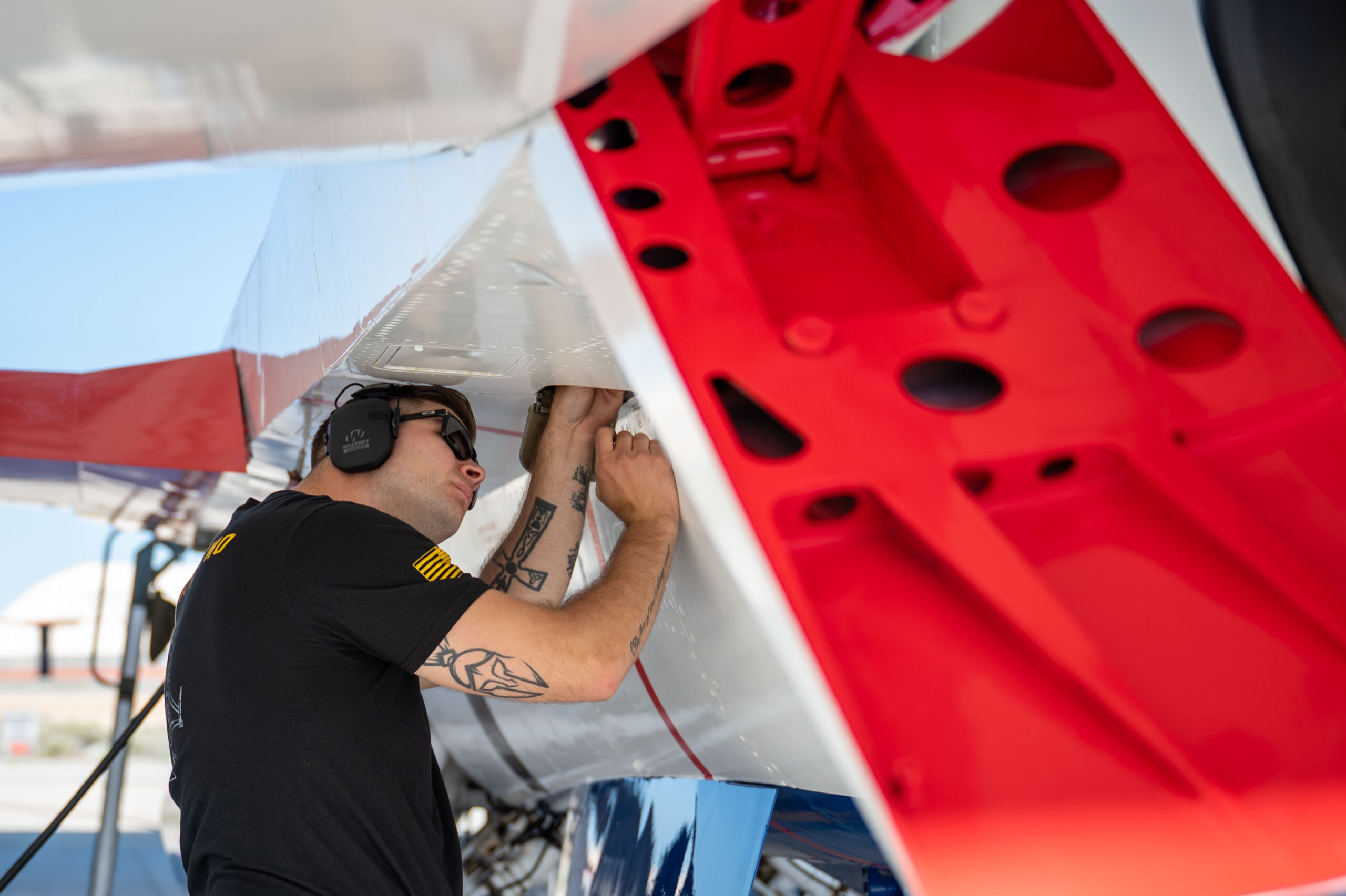
What goes into painting a jet like this? I would imagine the budget and approvals are not a rubber stamp and then actually doing it must be pretty involved. How was the original YF-16 scheme replicated?
I have to share one part of the story that will stick with me forever. On the tightest timeline imaginable, the paint team sanded, primered, and applied the white base coat. It would have been easy to accept imperfections given the timeline. They didn’t. It didn’t meet their standard so they got to hand sanding and started over.
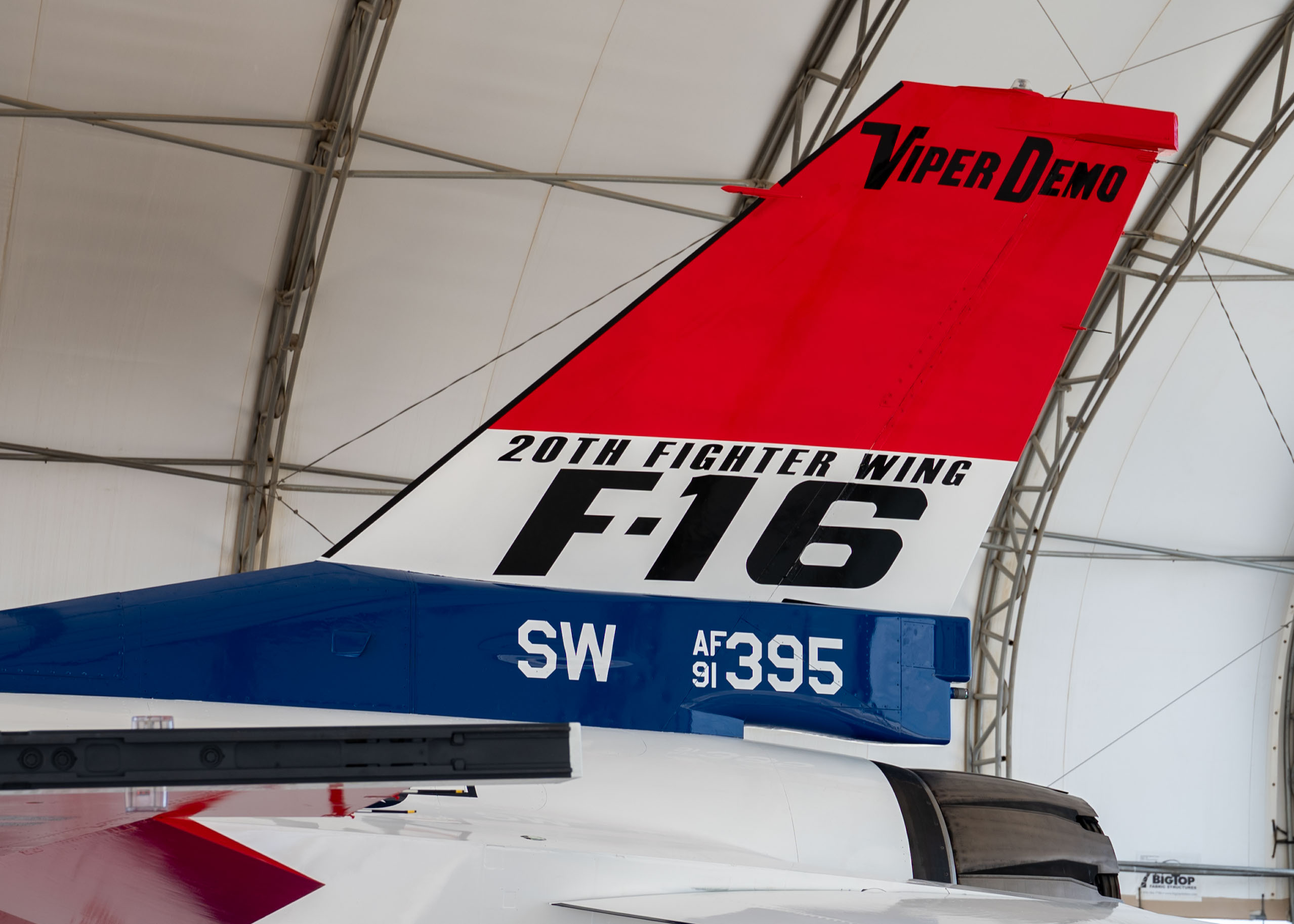
Mr. Tony Accurso served as the historical advisor for the entire paint process to make sure that no stone went unturned. Mr. Tim Storm of Lockheed Martin supplied the stencils for the fine details of the airplane that he had used for a modeling project in the past.
How is the F-16 community within the USAF unique? What sets it apart from other platforms’ communities, both culturally and operationally?
The standard is the standard until someone exceeds it. I can’t speak for the entire community, but what I will say is that tactically, we are evolving daily. The machines that we fight with become more capable, but they’re just machines. It is humans, not machines that make us the greatest fighting force the world has ever known. Drives to work hours before the sun comes up, time missed with family, bloody and dirty hands of crew chiefs, and fighter pilots that give all that they have to be lethal, tactical experts that only this country can produce.
It’s not a miracle and it’s not magic. It’s the product of millions of seemingly small decisions to go the extra mile that raises the waterline.
Originally, the F-35 was supposed to replace the F-16. Today, upgraded later block F-16s are now set to fly with the USAF for decades to come. What makes the 4th gen/5th gen, F-35/F-16 team so effective?
Again, I must point to the humans rather than the machines. Our leading tactical experts have found ways to package 4th and 5th generation assets that are technically capable to meet the demand, but are useless without a trained operator.
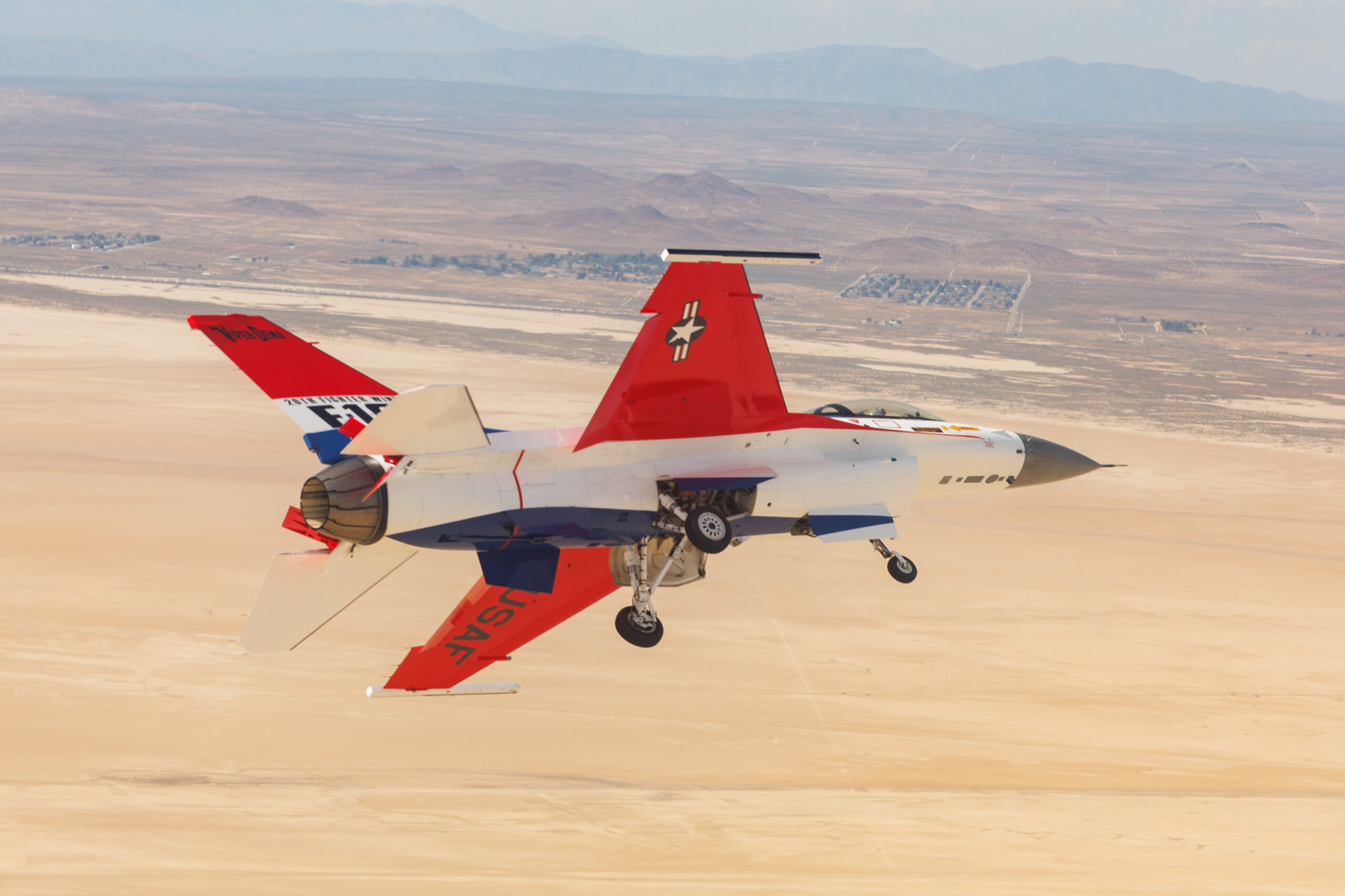
As you’re reading this, there are windowless rooms filled around the world with American Fighter Pilots working to raise the standard and ensure our command of the air remains unquestioned. They’ll succeed. I know that because I know so many of them personally and believe in them.
How did you end up in Vipers and subsequently getting what has to be one of the greatest jobs on the planet — leading the USAF’s F-16 Viper Demonstration Team? Was the F-16 always your ‘first pick’ or did it find you in a sense?
I don’t remember a day that I didn’t want to fly the F-16. To me, it’s always been the perfect fighter jet. It’s got smooth lines, it’s mostly engine and it’s got the great big bubble canopy that puts nothing between you, where you’re going or who you’re fighting.
As far as becoming the Commander and Pilot of the Viper Demonstration Team, I was fortunate enough to be in a position to apply for the job, interview and be selected. Flying the demonstration is the most routine and least rewarding part of the job because I thrive on expression and conversation. The demonstration is only 18 minutes of our day, which is otherwise filled with the most rewarding part of the job — meeting America. The best part of the job is taxiing back in from a performance, opening the canopy and walking towards the crowd.
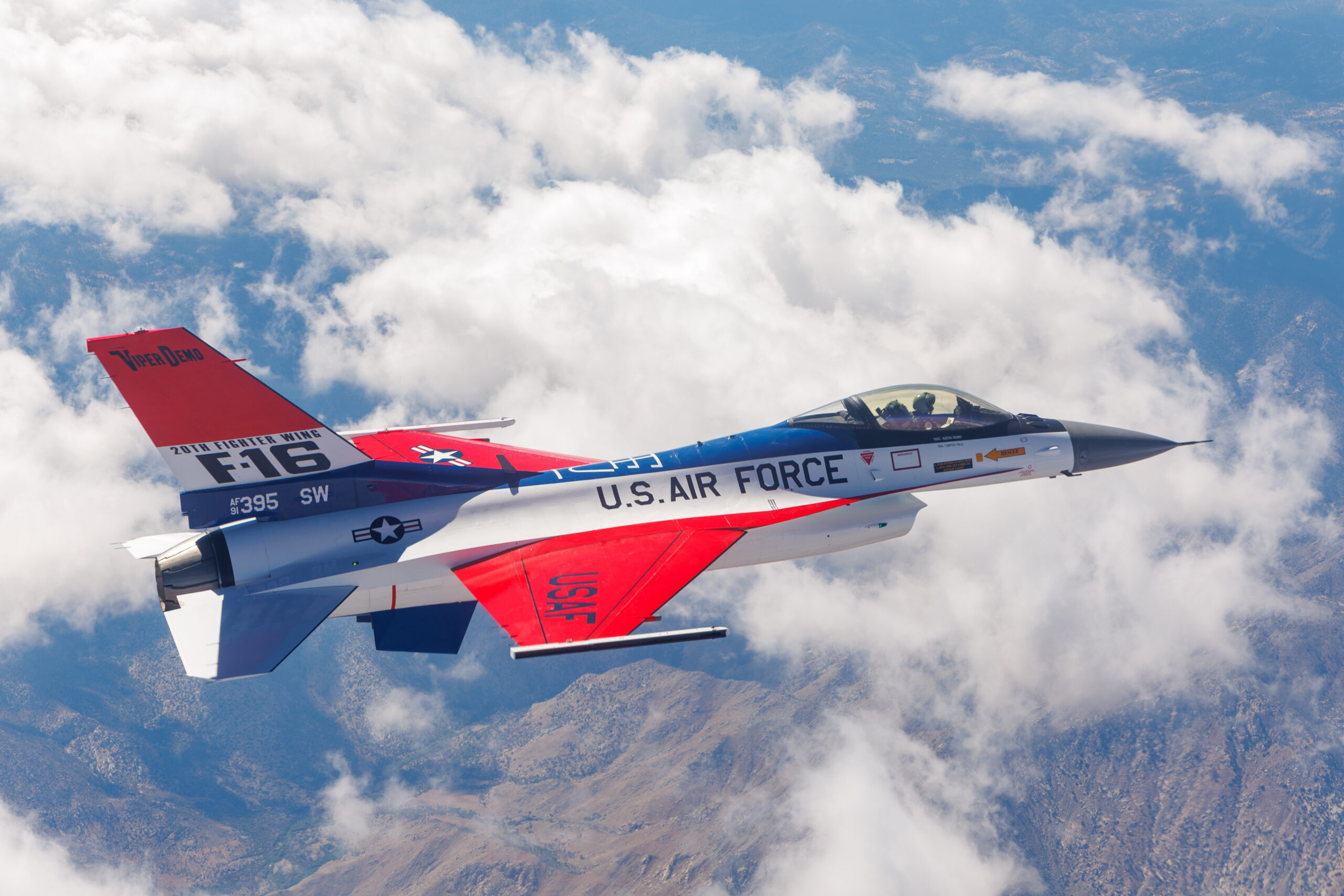
I’ll never forget the first packed show at Maxwell AFB. On the sneak pass from behind the crowd just shy of the speed of sound, the crowd disappeared under the nose and for two full seconds, which is an eternity traveling an entire football field in the time it takes to blink your eye. I could feel the energy on the taxi back in.
This year, the team has been immediately walking to the crowd line following the show. It’s the most important part of our performance. Distant figures in dark uniforms and a flying machine become humans that you can see and touch. That’s the magic. We’re people with unique personalities, favorite songs and relationships. Whether the spectators at the show process it or not, they don’t come to see the airplanes, they come to see the people that deliver them.
No one would sit in the stands to watch if it only cost the matador money to lose to the bull. It could cost him his life.
What is your most memorable moment under the F-16’s bubble canopy?
Looking out the window on May 13th at the dry lakebed at Edwards from the 50th Anniversary YF-16. There’s so much history and as an enthusiast, I imagined John Young and Bob Crippen looking at the same lakebed landing the Space Shuttle there for the first time or Phil Oestricher flying the F-16 for the first time in the same patch of sky. It was an unmatched view that I feel so fortunate to have had. It was delivered by hundreds of people, I am just the tiniest part of that effort.

Being the face of the team is a big job, but it takes so many dedicated hands to make the magic happen. Can you give us an idea of who supports the Demo Team and what goes into making sure you can arrive on time at airshows and other displays across the country all season long?
I am only one member of the team that has the honor of flying the airplane we deliver for the people. It’s maintained and delivered by the best maintainers in the world. These men get to work before me, and they often leave after me. You’ve seen the demonstration. I trust my life at 300 feet and 1,000 feet per second to a machine that they work on with their hands. While I serve as the Commander of this team, every day that I get with my family at the end of a performance is a gift from them and anything but luck.
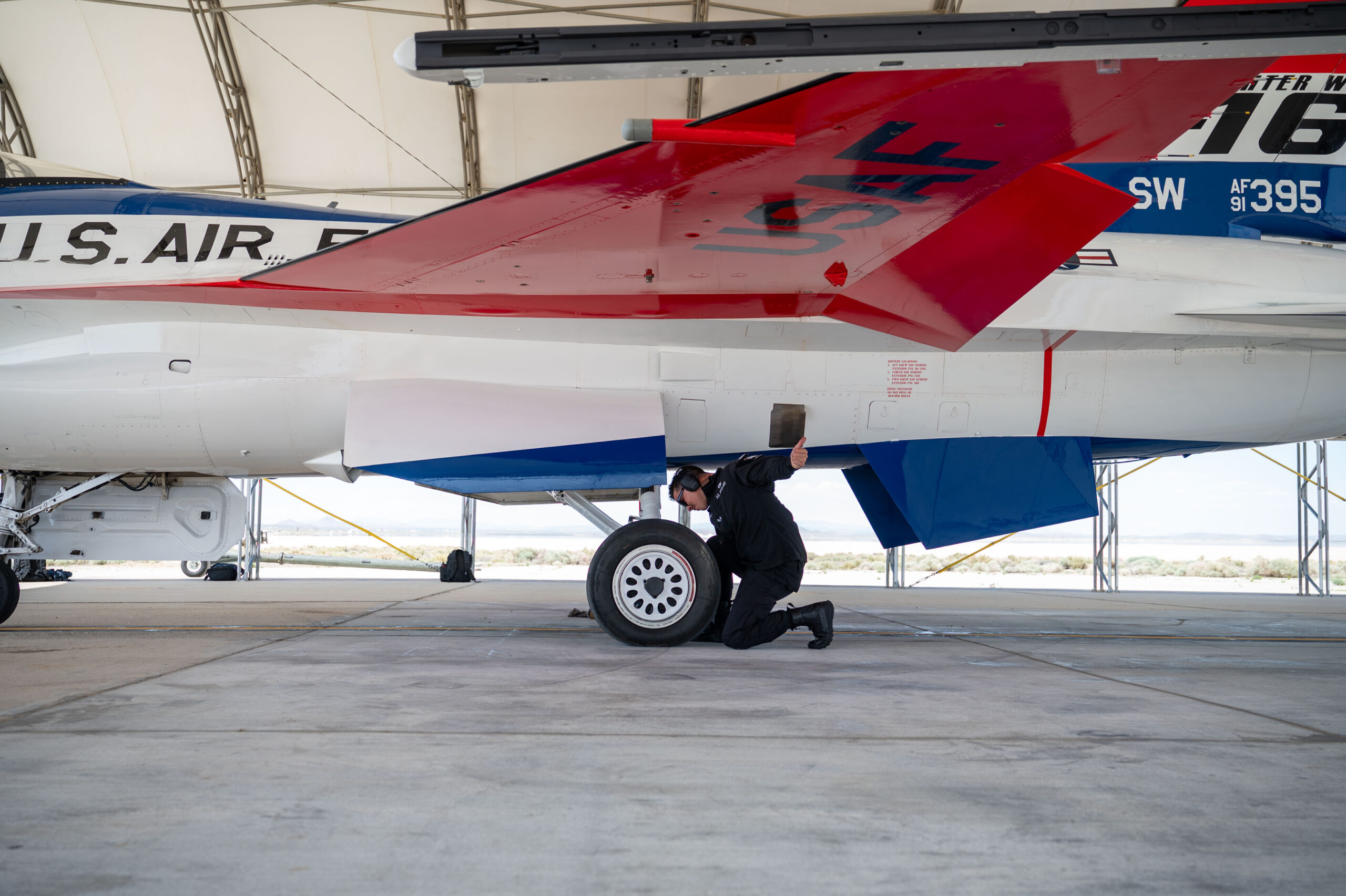
This year, we will share the 50th anniversary of the F-16 Fighting Falcon at 25 shows in four countries. We will go to each of those places with two aircraft maintained by only these men. They will maintain and fix those two aircraft with only the tools that can fit in a few briefcases and our sole public affairs specialist will connect us with hundreds of millions of people around the world.
I don’t believe that there is another team that is doing so much with so few.
50 years on and new F-16s are backordered for years and older ones are in high demand on the secondhand market, not just for allied air forces but for adversary support contractors. In your mind, what is the F-16’s legacy as it sits today and where do you see the type headed in the future?
The legacy is alive. When you close the hangar door and turn the lights off it’s only a machine. The story of the F-16 begins in a time when America pushed the envelope without the crippling fear of failure. We found ways to say “yes” rather than “no.” We found more value in what we would achieve if we succeeded rather than what we would save if we decided not to or what we would lose if we failed.
I’ve spent the last week with the airplane. Dozens of hours at this point. But each morning that I’ve walked in the hangar out of the intense California sun to see the airplane, my hair stands up. I can’t explain it. Sometimes we have to look at our past to find our way to the future. All of the answers are there. To whoever is reading this, I hope it does the same for you.
AD INEXPLORATA
“Toward the unexplored”
-FEMA
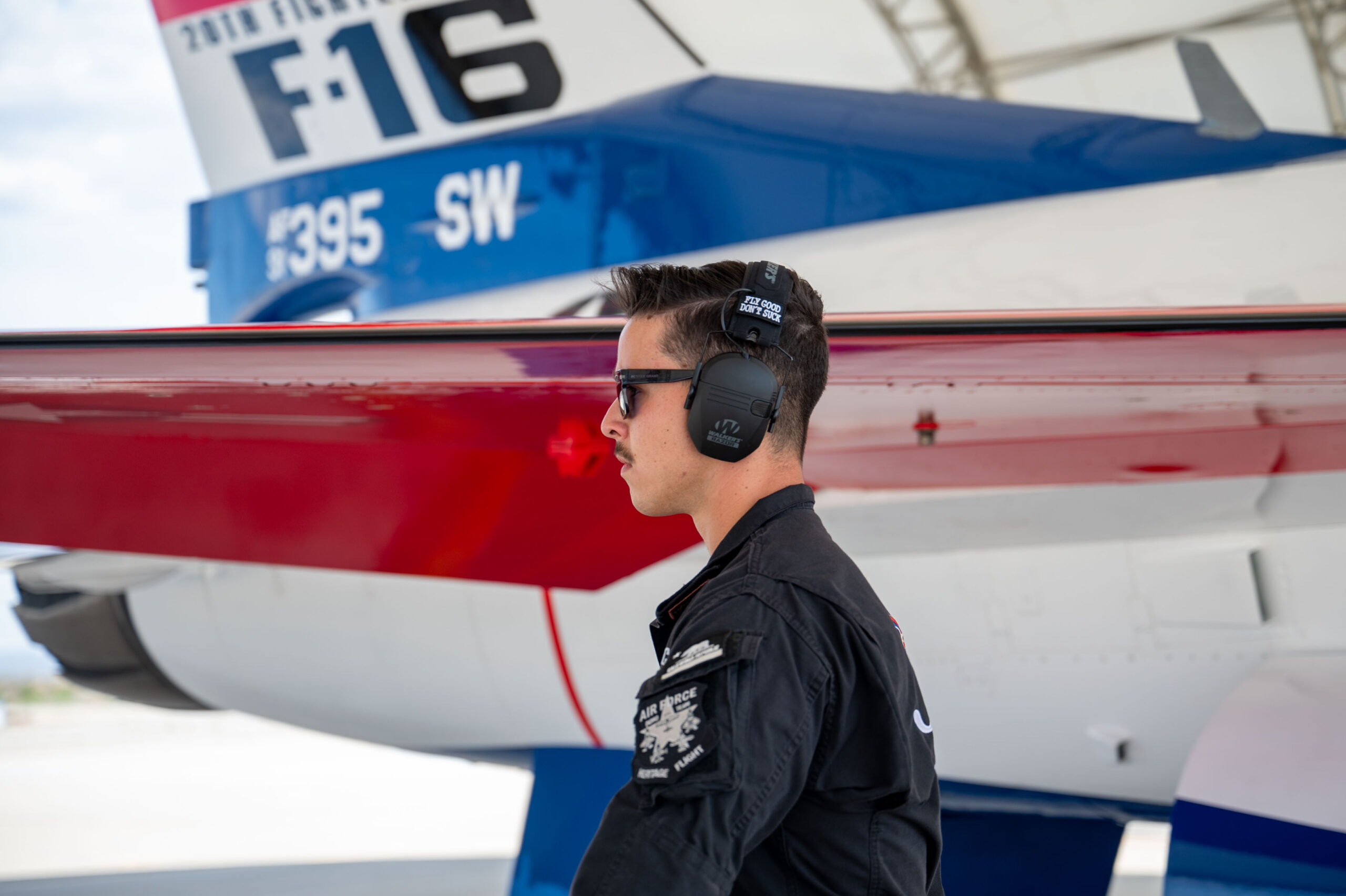
You can and absolutely should see the Viper Demonstration Team and its commemorative jet at the following shows around North America:
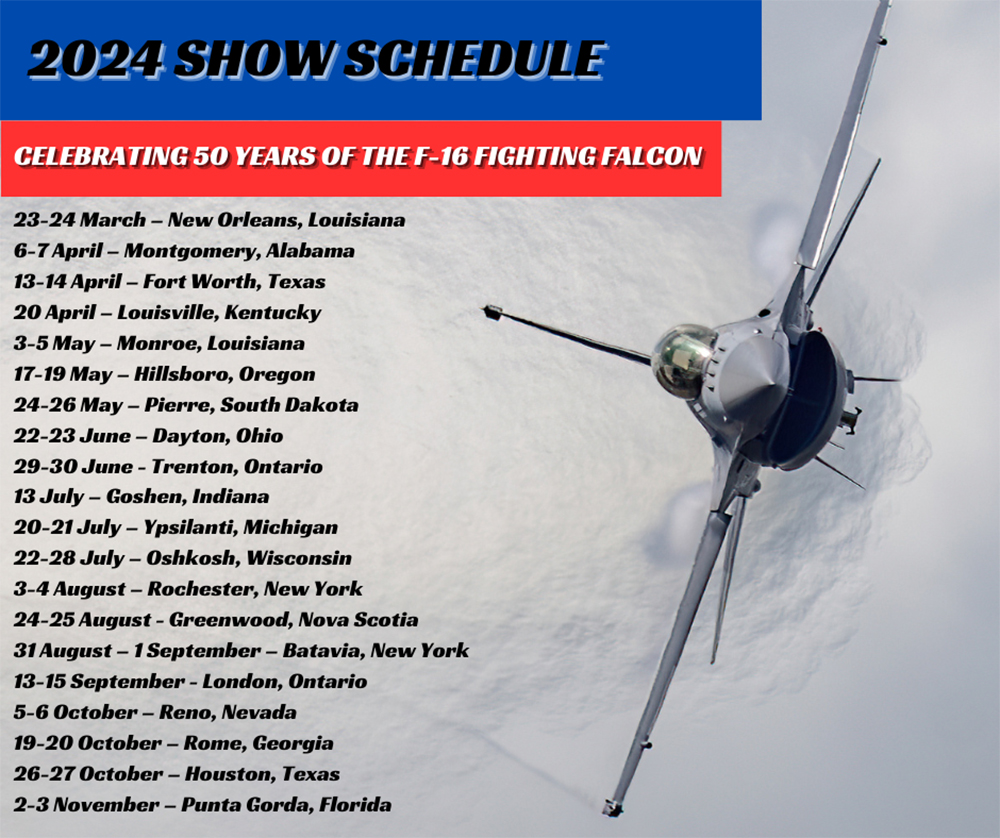
Contact the editor: tyler@twz.com
